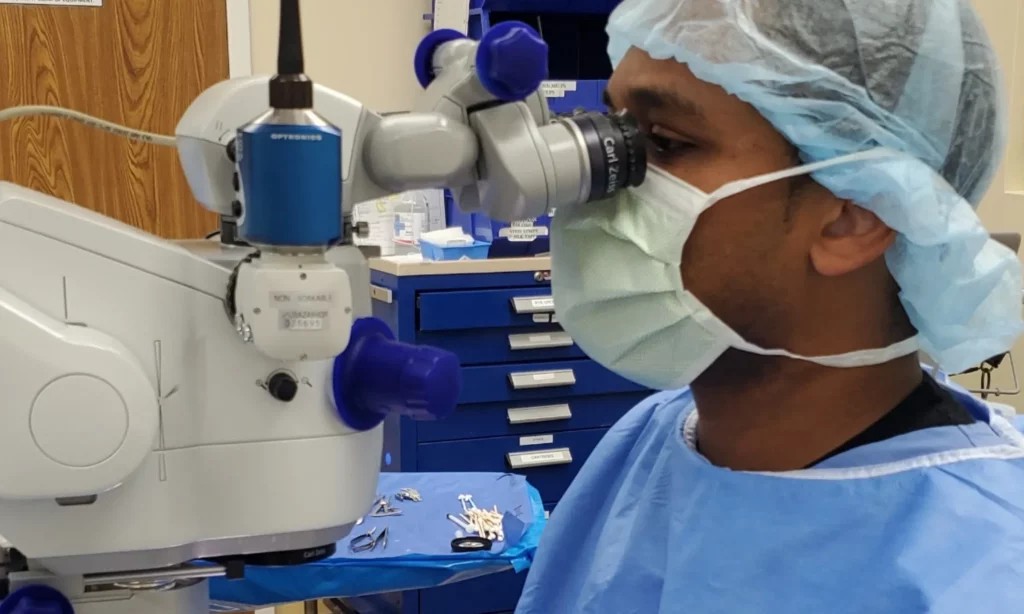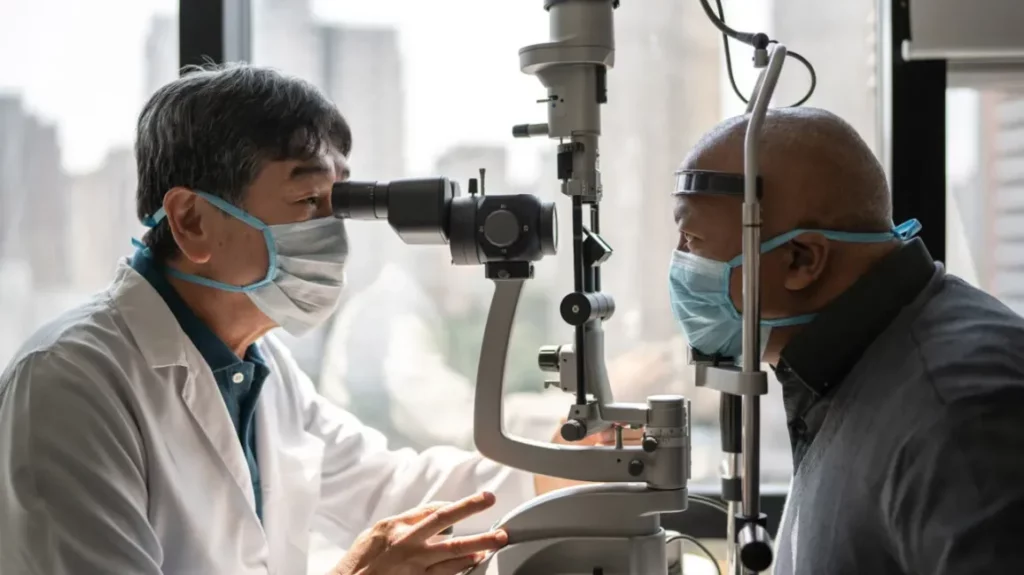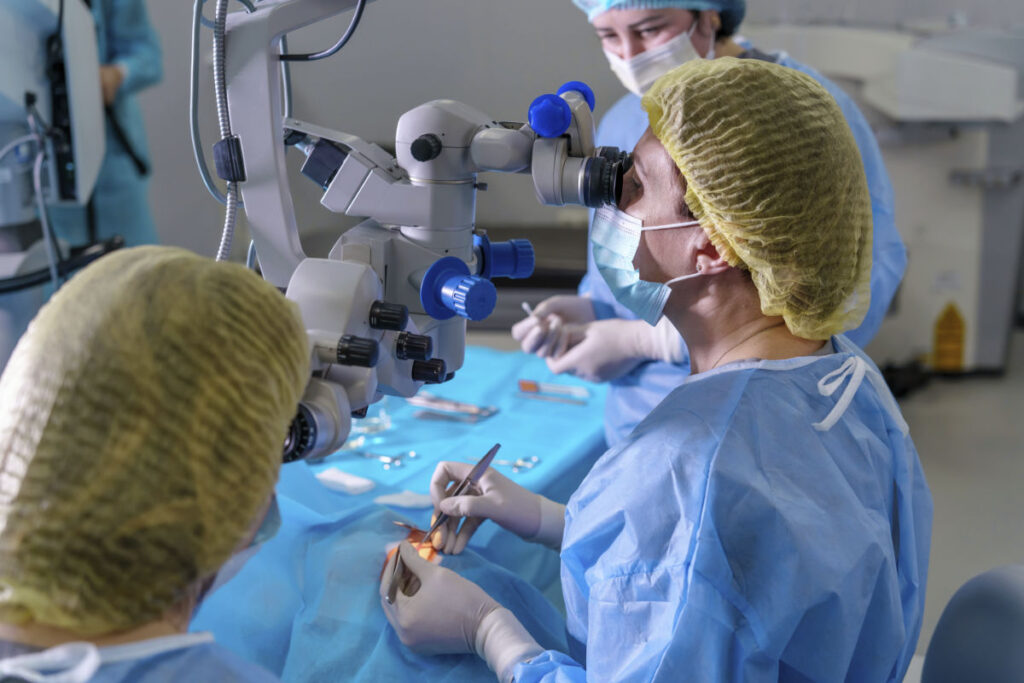The field of ophthalmology has witnessed significant advancements in the treatment of retinal diseases. Laser retinal treatments have emerged as targeted solutions for various retinal conditions, offering improved precision and effectiveness. Understanding the anatomy of the retina and the common types of retinal diseases is crucial in appreciating the potential benefits of laser retinal treatments.
Understanding Retinal Diseases
The retina, a thin layer of tissue located at the back of the eye, plays a crucial role in vision. It contains specialized cells that convert light into electrical signals, allowing the brain to interpret visual information. Unfortunately, the retina is susceptible to various diseases that can lead to vision loss and impairment.
When considering the benefits of laser retinal treatments, it’s essential to highlight the role of cutting-edge technology in enhancing patient outcomes. The precision and accuracy of these treatments are unparalleled, thanks to advanced imaging techniques that allow for real-time monitoring and adjustments during the procedure. This level of control not only ensures targeted treatment but also contributes to the overall safety and success of the intervention.
Retinal diseases are a complex and diverse group of conditions that affect the delicate structures within the eye. These diseases can impact individuals of all ages and can have a significant impact on quality of life. Understanding the anatomy of the retina and the common types of retinal diseases is essential in recognizing symptoms and seeking appropriate medical care.
The Anatomy of the Retina
The retina consists of several layers, each with a specific function. The outermost layer, known as the pigment epithelium, provides nourishment and support to the cells in the retina. Beneath this layer, the photoreceptor cells, including rods and cones, detect light and initiate the process of vision. The inner layers of the retina transmit electrical signals to the optic nerve, which carries visual information to the brain.
Within the intricate layers of the retina, there are complex interactions that allow for the conversion of light into neural signals. The photoreceptor cells, in particular, are highly specialized in capturing and processing light stimuli. Any disruption to these delicate structures can result in visual disturbances and potential vision loss.

Common Types of Retinal Diseases
Retinal diseases can manifest in various forms, each with its own set of symptoms and treatment options. Some of the most common types of retinal diseases include age-related macular degeneration, diabetic retinopathy, and retinal detachment. These conditions can cause progressive vision loss and must be promptly diagnosed and treated. Read more about diabetic retinopathy on https://www.ncbi.nlm.nih.gov/books/NBK560805/
Age-related macular degeneration is a leading cause of vision loss in older adults, affecting the central part of the retina known as the macula. Diabetic retinopathy, on the other hand, is a complication of diabetes that can lead to damage of the blood vessels in the retina. Retinal detachment is a serious condition where the retina pulls away from its normal position, requiring immediate medical attention to prevent permanent vision loss.
The Evolution of Retinal Treatments
Over the years, ophthalmologists have developed different treatment approaches to address retinal diseases. Traditional methods, such as medication and surgery, have been effective to a certain extent. However, the introduction of laser technology revolutionized the field and opened up new possibilities for targeted retinal treatments.
As technology continues to advance, researchers and medical professionals are constantly exploring innovative ways to improve retinal treatments. One promising development is the use of gene therapy to target specific genetic mutations that cause retinal diseases. By delivering functional genes to replace or repair faulty ones, gene therapy holds the potential to provide long-term solutions for patients with inherited retinal disorders.
Traditional Methods of Treatment
Prior to the advent of laser technology, the treatment options for retinal diseases were often limited. Medication, such as eye drops or oral drugs, was commonly prescribed to manage certain conditions. In more severe cases, surgical procedures were performed to repair or replace damaged retinal tissue. While these methods offered some relief, they were not always precise and carried certain risks.
Despite their limitations, traditional treatment methods remain an important part of managing retinal diseases, especially in cases where laser technology may not be suitable. Ophthalmologists continue to refine these approaches to improve outcomes and minimize potential side effects for patients.
The Advent of Laser Technology in Ophthalmology
Laser technology has transformed the way retinal diseases are treated. By harnessing the power of light, lasers can precisely target specific areas of the retina, allowing for more effective and accurate treatments. This non-invasive approach has revolutionized ophthalmology, offering patients a safer and more efficient way to address retinal diseases.
With the evolution of laser technology, new modalities such as photocoagulation and photodynamic therapy have emerged as valuable tools in the treatment of retinal conditions. These techniques utilize different wavelengths of light to selectively treat abnormal blood vessels or damaged retinal tissue, providing patients with targeted and personalized care.
Laser Retinal Treatments Explained
Understanding the science behind laser retinal treatments is essential in comprehending their efficacy. Laser technology allows for the controlled delivery of intense bursts of light energy to specific areas of the retina. This energy can be used to seal leaking blood vessels, remove abnormal tissue, or stimulate the regeneration of damaged cells.
When considering laser retinal treatments, it is crucial to appreciate the intricate nature of the human eye and the delicate balance required for optimal vision. The retina, a thin layer of tissue lining the back of the eye, plays a vital role in converting light into neural signals that are sent to the brain for visual recognition. Any disruption or damage to the retina can have profound implications for vision, making the precision of laser treatments paramount in preserving eyesight.
The Science Behind Laser Retinal Treatments
The precise mechanism of laser retinal treatments varies depending on the specific condition being treated. In some cases, the laser is used to cauterize or close off abnormal blood vessels, preventing further leakage and reducing the risk of complications. In others, the laser is employed to precisely target and remove abnormal tissue, allowing for the regeneration of healthy cells. Click here to learn more about regeneration.
Furthermore, the success of laser retinal treatments is not solely dependent on the technology itself but also on the expertise of the ophthalmologist performing the procedure. Ophthalmologists specializing in retinal diseases undergo extensive training to master the intricacies of laser surgery, ensuring optimal outcomes for patients.
Different Types of Laser Retinal Treatments
There are several types of laser retinal treatments, each designed to address specific retinal diseases. Photocoagulation, for example, involves using a laser to seal leaking blood vessels, commonly seen in diabetic retinopathy. Photodynamic therapy utilizes a special light-activated drug to target and destroy abnormal cells. These targeted treatments offer the potential for improved outcomes and reduced side effects compared to traditional methods.
As technology continues to advance, researchers are exploring new applications of laser technology in the field of ophthalmology. From targeted drug delivery systems to enhanced imaging techniques, the future of laser retinal treatments holds promise for further improving patient outcomes and expanding treatment options for a variety of retinal conditions.

Benefits of Laser Retinal Treatments
Laser retinal treatments offer a range of benefits that make them an attractive option for patients and ophthalmologists alike.
Precision and Accuracy
One of the primary advantages of laser retinal treatments is their high level of precision. The ability to target specific areas of the retina allows for more accurate treatment delivery, minimizing collateral damage and optimizing therapeutic outcomes.
Moreover, the precision offered by laser retinal treatments extends beyond the immediate procedure. By preserving more healthy tissue and minimizing trauma to the eye, these treatments pave the way for better long-term retinal health and function. This nuanced approach sets a new standard in ophthalmic care, where customized treatment plans can be tailored to each patient’s unique retinal condition, ensuring optimal results.
Recovery and Rehabilitation
Compared to traditional surgical procedures, laser retinal treatments often require shorter recovery times. This means that patients can resume their normal activities more quickly, without prolonged downtime or restricted movements. Additionally, these treatments may offer improved rehabilitation potential, enabling patients to regain and preserve their vision more effectively.
Furthermore, the accelerated recovery associated with laser retinal treatments not only benefits the individual patient but also has broader implications for healthcare systems. By reducing post-operative care requirements and enabling faster patient turnover, these treatments contribute to more efficient use of medical resources and facilities, ultimately benefiting a larger population of individuals in need of retinal care.
Potential Risks and Complications
While laser retinal treatments are generally safe and well-tolerated, they do carry certain risks that need to be considered.
Short-term Side Effects
Following laser retinal treatments, patients may experience temporary side effects such as blurred vision, mild discomfort, or sensitivity to light. These typically resolve within a few days or weeks and are considered normal parts of the healing process.
Long-term Implications
In rare cases, laser retinal treatments may have long-term implications. For instance, there is a small risk of retinal scarring or changes in vision. However, these risks are often outweighed by the potential benefits and the careful assessment and monitoring by ophthalmologists minimize these concerns.
It is crucial for patients to understand that while laser retinal treatments offer significant advantages, there are potential risks that must be acknowledged. One such risk is the possibility of developing increased intraocular pressure, which can lead to conditions like glaucoma if not monitored closely. Additionally, some patients may experience a temporary increase in floaters or flashes of light post-treatment, which usually subside with time.
Furthermore, it is important to note that individual responses to laser retinal treatments can vary. Factors such as age, overall health, and the specific condition being treated can influence the outcome of the procedure. Patients should have realistic expectations regarding the results and be prepared for the possibility of needing follow-up treatments to achieve the desired outcome.In conclusion, laser retinal treatments have emerged as targeted solutions for a wide range of retinal diseases. By leveraging the power of laser technology, ophthalmologists can provide more precise and effective treatments, leading to improved outcomes for patients. However, it is important for individuals to consult with their ophthalmologists and understand the potential risks and benefits before undergoing any laser retinal treatment. With continued advancements in technology, laser retinal treatments are poised to play an increasingly significant role in the field of ophthalmology, offering new hope for those affected by retinal diseases.
Learn more about cataract surgery on: Complete Guide to Cataract Eye Surgery

